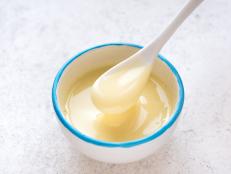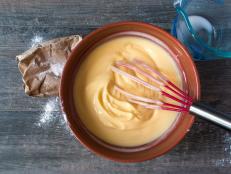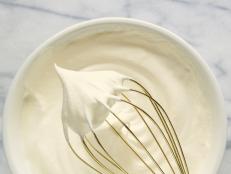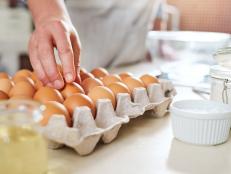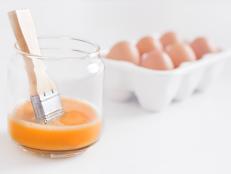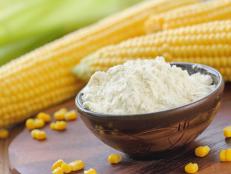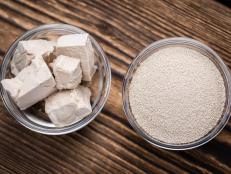Can You Eat Raw Flour?
And perhaps more importantly, should you really be eating raw cookie dough?

Glasshouse Images/Getty Images
By Sheela Prakash for Food Network Kitchen
Sheela is a cookbook author, recipe developer, food and wine writer and registered dietician.
Though it might appear safe, you should not eat raw flour as it could make you sick. It’s likely you never thought to scoop up a spoonful to eat from the bag, but raw flour can be found in cookie dough, brownie and cake batter and bread dough. We all can agree a scoop of chocolate chip cookie dough is enticing, indeed, but is it better off avoided? Here’s everything you need to know about the potential dangers of consuming raw flour.

photograph by dorisj/Getty Images
Can You Eat Raw Flour?
Raw flour should not be eaten because it could make you sick from food poisoning or foodborne illness. According to the United States Food and Drug Administration, flour is made from ground raw grains — typically wheat — which are grown in fields and may be exposed to harmful bacteria such as Salmonella and pathogenic Escherichia coli (E. coli). The grains aren’t treated to remove potential bacteria before they’re milled into flour, which means there’s always a risk the flour could be contaminated. This is the same reason why it’s important to always wash your fruits and vegetables before consuming them, as they, too, are grown in fields and can be exposed to the same bacteria. You can’t wash flour, however, which is why it’s never safe to consume it without cooking it first. Cooking flour kills any potential contaminants, which then make it completely safe to eat.
Can You Eat Raw Flour In Cookie Dough?
Since the flour in cookie dough is still raw, it holds the same risks and could contain dangerous bacteria. We often think of the raw eggs in cookie dough as the number one reason to avoid snacking on it when we’re baking a batch of our favorite cookie recipe, but it’s both raw eggs and raw flour that are concerning. Raw flour and raw eggs are on the Center for Disease Control’s list of foods that are most commonly associated with food poisoning and foodborne illness. That’s why it’s best to bake your cookies before indulging in them.
The same can be said for brownie batter, cake batter, tortilla dough, bread dough, pie dough, pizza dough and even homemade Play Dough for the kids. It’s not completely safe to eat in its raw form.
What Happens If You Eat Raw Flour?
You run the risk of getting sick from food poisoning or foodborne illness if you do end up eating raw flour. While the actual level of risk is debated by public health officials, it's really best to play it safe and avoid even the slightest chance. There have been a few recent E. Coli outbreaks in common brands of flour like General Mills and Aldi, which prove this. If there is a future outbreak and the flour you have in your pantry is recalled, throw it away immediately and thoroughly wash the storage container it was in, if any, along with any potentially contaminated surfaces like countertops.

How to Make Raw Flour Safe to Eat
Still can’t say no to cookie dough? We don't blame you. The good news is there is a simple way to make raw flour safe to eat without completely cooking the raw dough first.
Method 1: Toast the Raw Flour
Step 1: Bake It at 350 degrees F. Spread the flour onto a baking sheet and bake it at 350 degrees F until it has slightly darkened in color, about 15 minutes.
Step 2: Take the flour's temperature. Carefully pile the flour into a mound and insert an instant-read thermometer into the center. The thermometer should read at least 165 F.
Step 3: Continue to cook flour, if necessary. If it doesn't, spread the flour back out and continue baking it, rechecking the temperature every few minutes, until it does.
Method 2: Microwave the Raw Flour
Alternatively, you can also microwave the raw flour to kill any potential contaminants.
Step 1: Microwave the flour for 1 minute. Microwave the raw flour in a microwave-safe bowl for 1 minute.
Step 2: Stir the flour. Remove the flour from the microwave and stir it well.
Step 3: Microwave the flour again. Microwave the flour for 1 more minute, or until the temperature of the flour reaches at least 165 F.
Let the flour cool completely before using it in our edible chocolate chip cookie dough recipe or our base edible cookie dough recipe with variations like peanut butter and snickerdoodle, both of which also skip the raw eggs to ensure it's safe to enjoy.
Related Links:

























